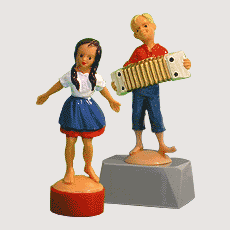Drive
What is a Drive?
The concept of drives is at the center of Freud's theory. In contrast to the biological needs expressed in hunger and thirst, the sex drive is not connected to fixed aims and can never be fully satisfied. This sets human beings apart from all other living things and enables them to effect change on themselves and their environment. According to Freud, the cultural world is nothing other than a sublimation of the sex drive.
"Drive" refers to an independent force that connects and reciprocally influences the body and the mind. Repressed desires can express themselves in physical symptoms, and a person's own sexual identity can be determined more strongly by social conceptions than by biological gender.
Anna O.
While tending to her ailing father, Anna O. hears dance music in the distance. She is overcome by the desire to go dancing. At the same time, she wants to play the part of the self-sacrificing daughter, as is expected of her. She fends off the desire to satisfy her own innate drives and instead represses them - yet this robs her drives of their object and they begin to seek another form of satisfaction. The unconscious translates the psychic conflict into a bodily symptom, thereby reversing the original object. Her desire to go dancing and enjoy herself results in the opposite reaction: paralysis.



